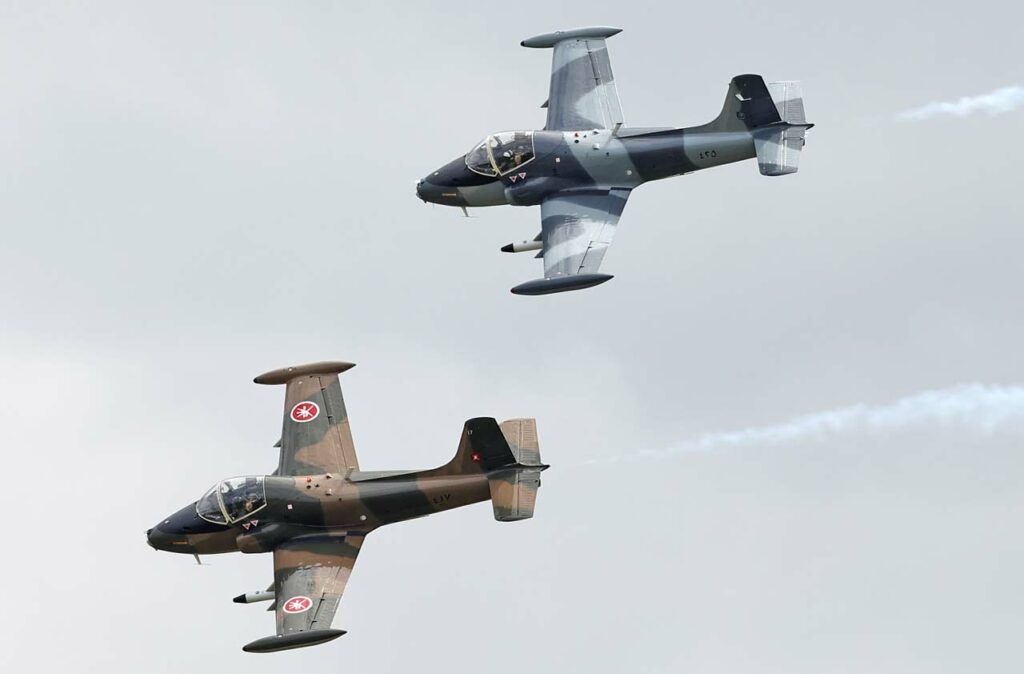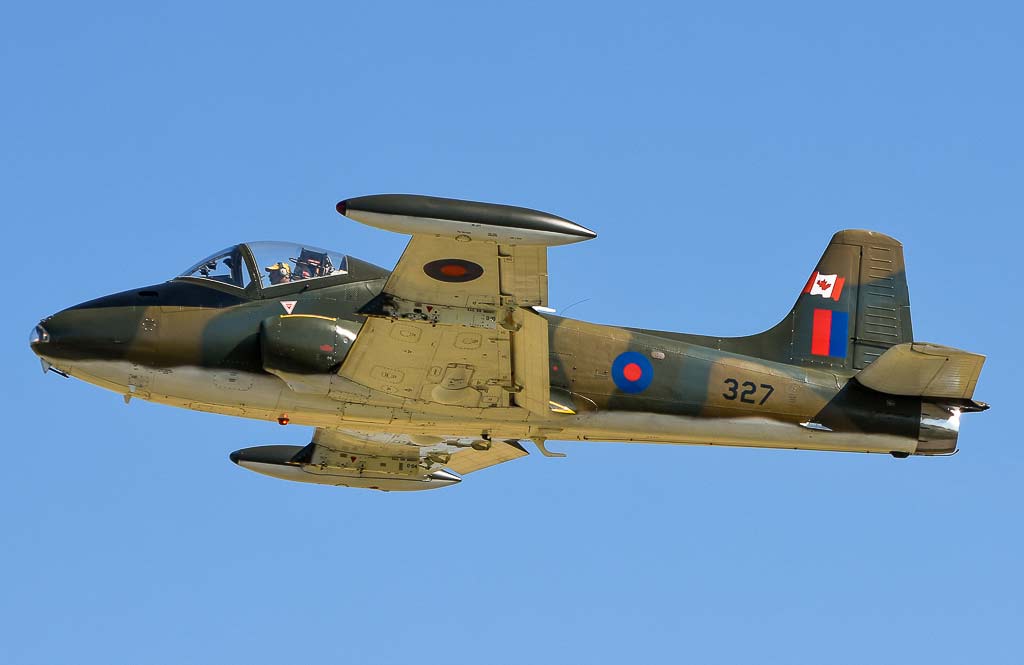The BAC Strikemaster, a British light attack and training aircraft, is known for its robustness, simplicity, and effectiveness in close air support roles.
In brief
The BAC Strikemaster is a military development of the Jet Provost, designed as a light attack and counter-insurgency aircraft, with secondary roles in training. Introduced in the late 1960s, it’s powered by a Rolls-Royce Viper turbojet engine, offering enhanced armament capabilities, including provisions for machine guns, bombs, rockets, and external fuel tanks. With a two-seat configuration, it serves both as a trainer and a combat aircraft, capable of operating from rough airstrips with minimal support. Its straightforward design emphasizes reliability, cost-effectiveness, and ease of maintenance, making it a practical choice for air forces needing a versatile light-attack aircraft.
The BAC Strikemaster articulates the evolution of military aviation towards versatile light-attack aircraft, capable of fulfilling multiple roles from training pilots to engaging in direct combat.

History of the Development of the BAC Strikemaster
In the context of the 1960s, as many nations sought cost-effective yet capable military aircraft, the British Aircraft Corporation (BAC) identified a niche for a light-attack aircraft derived from its successful Jet Provost trainer. The aim was to create an affordable, easy-to-operate, and maintainable aircraft that could serve both in advanced training and light-attack roles. The Strikemaster was a response to the growing counter-insurgency demands, offering a robust platform that could operate from austere environments typical in such operations.
The development was launched in the mid-1960s, with the first prototype taking to the skies on October 26, 1967. The aircraft was designed to be a dual-role machine, providing advanced training capabilities while being armed and armored sufficiently to undertake light ground-attack missions. This adaptability was crucial during a period when air forces were looking for versatile and cost-efficient solutions in the face of budget constraints and evolving combat requirements.
Design of the BAC Strikemaster
The Strikemaster boasts a straightforward, durable design, featuring a low-wing monoplane configuration with an all-metal airframe. It’s powered by a single Rolls-Royce Viper Mk. 535 turbojet engine, producing 3,410 pounds of thrust, which grants it respectable performance in its class. The aircraft is equipped with two underwing hardpoints capable of carrying bombs, rockets, and external fuel tanks, complemented by two internal machine gun pods for close air support missions.
The design includes reinforced airframes to withstand operational strain, an armored cockpit to enhance pilot survivability, and improved avionics, including communication and navigation systems suitable for both training and combat roles. The Strikemaster’s cockpit layout, designed for a crew of two, facilitates an effective training environment while also allowing for efficient mission execution in combat scenarios.
Performance of the BAC Strikemaster
The Strikemaster’s performance profile includes a top speed of around 450 mph, a service ceiling of 40,000 feet, and a range of approximately 1,000 miles, making it competent for light attack missions and tactical support. Its agility, enhanced by the powerful Viper engine, allows for effective low-level operations, crucial for its counter-insurgency role.
When compared to contemporaries like the Cessna A-37 Dragonfly or the Embraer EMB 312 Tucano, the Strikemaster holds its own in terms of speed and payload capacity, though it generally prioritizes simplicity and ruggedness over advanced technological features.
Variants of the BAC Strikemaster
The Strikemaster was produced in several variants, mainly differing in their avionics suites, engine models, and armament capabilities:
- Mk 80/81: Export versions with specific avionics tailored to customer requirements.
- Mk 82/83/84: Variants with incremental improvements in engine performance and weapon systems.
Each variant was designed to cater to the diverse needs of international customers, ensuring operational flexibility and effectiveness.

Military Use and Combat of the BAC Strikemaster
The Strikemaster was employed by various air forces across the globe, notably in the Middle East, Africa, and South America. It saw combat in several conflicts, providing close air support, reconnaissance, and interdiction missions. For instance, it was actively used by the Royal Air Force of Oman during the Dhofar Rebellion and saw action in the Yemeni and Sudanese air forces.
Its operational history includes effectiveness in low-intensity conflicts, where its capabilities in ground support and forward air control were particularly valuable. Despite its light-attack designation, the Strikemaster proved to be rugged and versatile, handling various combat scenarios with reliability.
The BAC Strikemaster exemplifies the essential characteristics sought in a counter-insurgency and training aircraft: simplicity, efficiency, and versatility. Its design philosophy underscores the balance between performance, cost-effectiveness, and operational flexibility, making it a noteworthy aircraft in the annals of military aviation, particularly in the roles it has served across various global theaters.
Back to the Fighter Jet section.